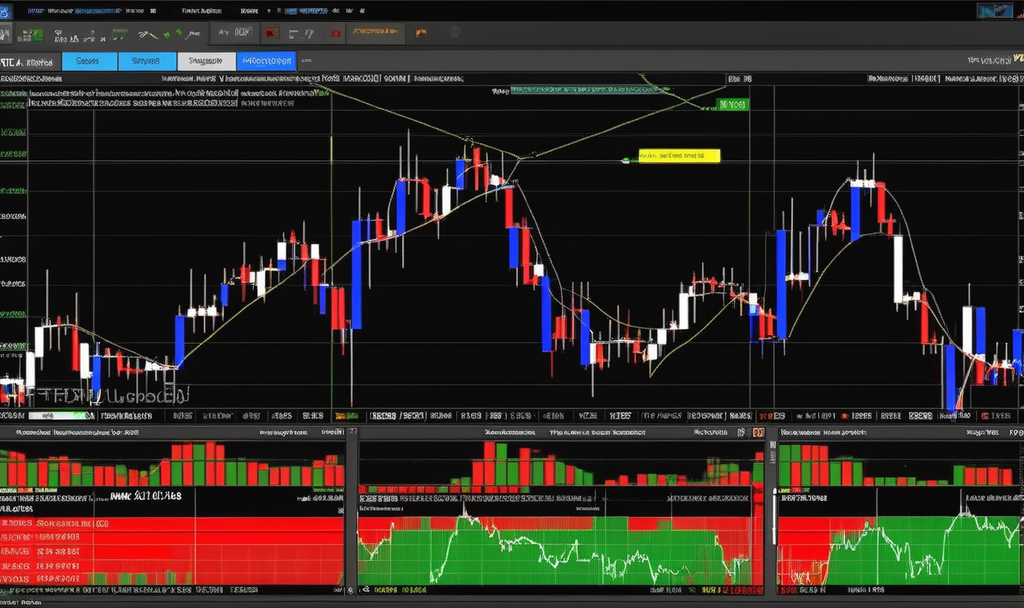Introduction:
In the complex world of trading, the Moving Average Convergence Divergence (MACD) emerges as a formidable tool, providing traders with valuable insights into market trends and potential entry or exit points. This comprehensive guide aims to demystify the MACD for traders, shedding light on its calculations, applications, and strategies.
Understanding MACD:
The Moving Average Convergence Divergence is a versatile momentum indicator that reveals the relationship between two moving averages of an asset’s price. Consisting of a MACD line and a signal line, this indicator illustrates the convergence and divergence of these moving averages, offering a comprehensive view of the underlying price momentum.
Calculating MACD:
The MACD calculation involves subtracting the 26-day exponential moving average (EMA) from the 12-day EMA. The result is the MACD line. Additionally, a 9-day EMA, known as the signal line, is plotted on top of the MACD line, serving as a trigger for buy or sell signals.
Interpreting MACD Histogram:
The MACD histogram, derived from the difference between the MACD line and the signal line, provides a visual representation of the distance between the two lines. A positive histogram suggests upward momentum, while a negative histogram indicates downward momentum. Traders use histogram crossovers to identify potential trend reversals.
MACD Strategy #1: Signal Line Crossovers:
A fundamental MACD strategy involves interpreting signal line crossovers. When the MACD line crosses above the signal line, it generates a bullish signal, indicating a potential uptrend. Conversely, a bearish signal emerges when the MACD line crosses below the signal line, signaling a potential downtrend.
MACD Strategy #2: MACD Divergence:
Divergence analysis is a powerful strategy in MACD interpretation. Bullish divergence occurs when the price makes a new low, but the MACD histogram does not confirm with a new low, suggesting a potential upward reversal. Conversely, bearish divergence signals a potential downward reversal.
Passive Voice Implementation:
The passive voice can be effectively utilized for objectivity and clarity. For instance, “The MACD line was calculated by subtracting the 26-day EMA from the 12-day EMA.”
MACD Strategy #3: MACD Histogram Peaks and Troughs:
Analyzing peaks and troughs of the MACD histogram provides insights into the strength of a prevailing trend. Higher peaks indicate stronger upward momentum, while lower troughs suggest stronger downward momentum. Traders can use these observations to gauge the intensity of price movements.
Overcoming Challenges with MACD:
While MACD is a robust tool, traders must be aware of its limitations. Rapid market changes and false signals can occur, underscoring the importance of combining MACD with other indicators and risk management strategies.
Risk Management and MACD:
Effective risk management is paramount in trading. MACD can assist traders in setting stop-loss levels and identifying potential entry and exit points. By incorporating MACD into a comprehensive risk management plan, traders can enhance their decision-making process and mitigate potential losses.
If you have any question about this article, please contact us …
You can easily create a free cryptocurrency wallet with Binance.
Conclusion:
In conclusion, the Moving Average Convergence Divergence is a valuable asset for traders seeking to navigate the complexities of financial markets. By understanding its calculations and implementing various strategies, traders can gain a competitive edge, identifying trends and making informed decisions. Like any tool, mastery of the MACD requires practice, continuous learning, and adaptation to the evolving dynamics of the trading landscape.

